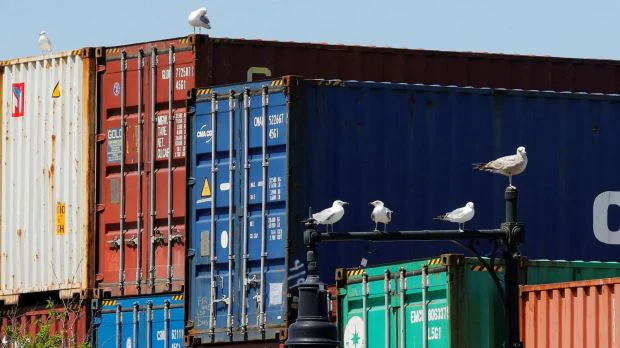The recent announcement by the Biden administration to significantly increase tariffs on a range of Chinese imports has sent shockwaves through global supply chains. Among the most dramatic hikes is the quadrupling of tariffs on Chinese electric vehicles (EVs) to 100%, and a near-doubling of tariffs on solar cells, semiconductors, and certain steel and aluminum products to 50%.
For exporters in the affected sectors, this punitive tariff wall poses an existential threat to their US market share. However, industry analysts and trade experts suggest a multi-pronged strategy to mitigate the damage and potentially retain a foothold in the lucrative American market.
Detailed Analysis of the Tariff Impact
The new tariffs are highly targeted, focusing on sectors the US aims to bolster domestically under its industrial and clean energy policies.
-
Electric Vehicles (EVs): The tariff rate on EVs jumps from 25% to 100%. This effectively prices out almost all Chinese-made EVs, including those from giants like BYD, which were considering entry into the US market. This is a protective measure for nascent US EV producers.
-
Solar Energy: Tariffs on solar cells double from 25% to 50%. This aims to protect US manufacturers like First Solar from a flood of cheaper Chinese components, though it may slow down the pace of US solar project development in the short term by increasing costs.
-
Semiconductors: Tariffs on semiconductors increase from 25% to 50%. This is a key move to secure the supply chain for critical technology and boost the domestic chip-making industry incentivized by the CHIPS Act.
-
Steel & Aluminum: Certain steel and aluminum products now face a 25% tariff, up from 0-7.5%. This protects a traditional US industry that the government considers vital for national security.
For exporters outside of China who supply intermediate goods to Chinese manufacturers, there is also a significant risk of reduced orders as Chinese production for export slows.
Actionable Strategies for Exporters to Avoid Losing Market Share
Exporters, particularly those in China and global supply chains linked to these sectors, are urgently exploring several options:
1. Supply Chain Diversification and “Friend-Shoring”:
This is the most prominent medium-to-long-term strategy. Companies are accelerating plans to move final assembly or sourcing of key components to countries not subject to these high tariffs.
-
Details: Establishing manufacturing facilities in Mexico, Vietnam, Thailand, or Morocco allows exporters to leverage these countries’ free trade agreements (like USMCA with Mexico) or generally lower tariff rates with the US. This “last touch” transformation can circumvent country-of-origin rules. For example, a Chinese solar panel company might set up a factory in Vietnam to assemble cells into modules, which are then exported to the US at a much lower tariff rate.
2. Deepening Value-Added Services in the US:
If the product itself becomes too expensive to import, exporters can shift their business model.
-
Details: Instead of selling finished goods, companies can focus on providing high-value, tariff-exempt services like installation, maintenance, specialized software, consulting, or licensing proprietary technology. This allows them to maintain a brand presence and revenue stream in the US based on their expertise rather than their physical product.
3. Product Differentiation and Niche Marketing:
For some high-end, specialized products where there is no US alternative, a 50% tariff may be absorbable.
-
Details: Companies can focus on marketing the superior quality, unique technology, or specific performance characteristics of their product that justify the higher price point. This strategy is only viable for market leaders with a significant technological edge in a niche B2B sector, not for mass-market consumer goods.
4. Cost Optimization and Absorption:
Exporters can look inward to minimize the price increase passed on to the US consumer.
-
Details: This involves aggressively optimizing supply chains, improving production efficiency, and accepting lower profit margins to keep the final price competitive. This is often a temporary and painful measure used while longer-term strategies (like building factories overseas) are implemented.
5. Legal and Customs Classification Review:
A thorough review of how products are classified under the Harmonized Tariff Schedule (HTS) is essential.
-
Details: Sometimes, a product can be classified under a subcategory that carries a lower tariff rate. Ensuring perfect compliance with complex “substantial transformation” rules for products assembled in third countries is also critical to avoid customs penalties.
6. Lobbying and Trade Diplomacy:
While individual companies have less power here, industry associations are actively engaged.
-
Details: Groups can lobby the US government for exemptions for specific products that are not made in the US or are critical for American businesses. They can also encourage their home governments to engage in diplomatic talks to de-escalate trade tensions.
The Outlook
The new 50%+ tariff landscape creates a formidable barrier. For many exporters of finished goods, the US market will become effectively closed for the foreseeable future. However, for agile companies willing to fundamentally rethink their supply chains and business models, opportunities remain to preserve—and eventually rebuild—their presence in the United States. The key will be speed, flexibility, and a significant investment in geopolitical risk management.





Leave a Reply